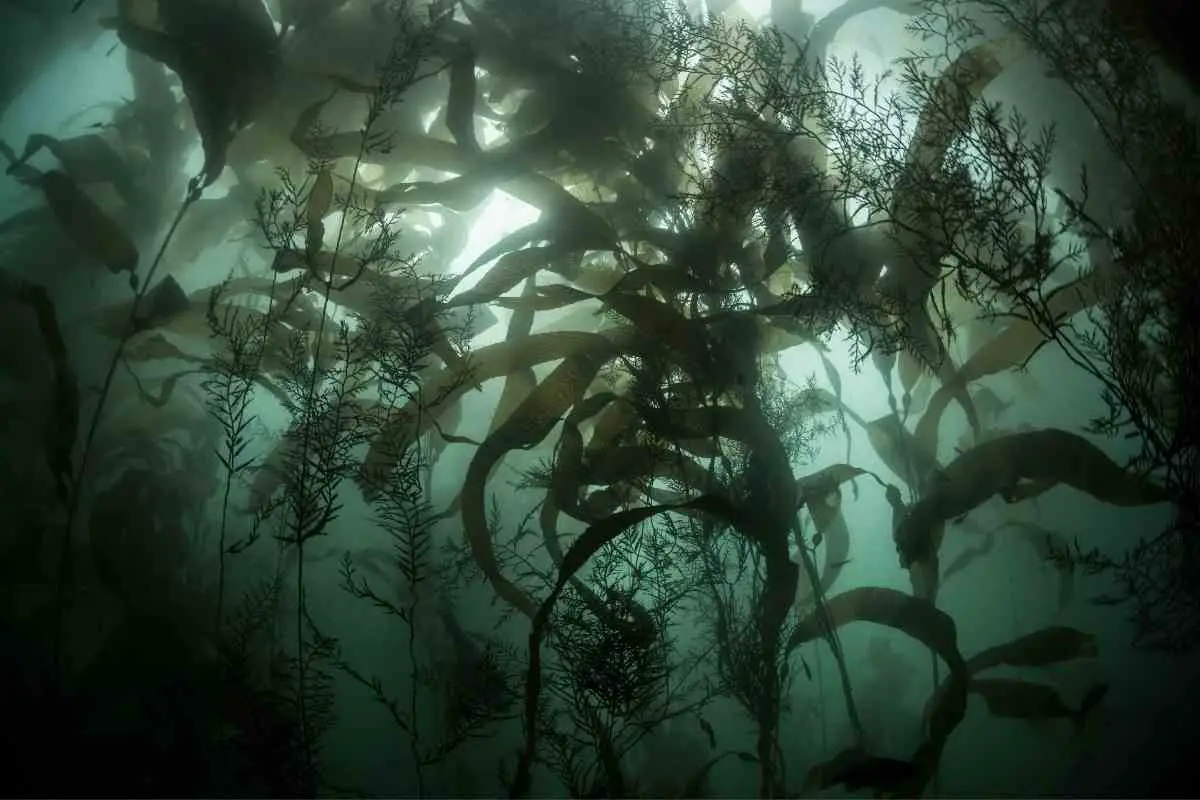When you’re trying to grow plants, you want one thing more than anything else – that they grow healthy.
For that, many choose to use a fertilizer.
These days, organic gardening and farming practices are becoming increasingly popular, and this means that gardeners need to find organic fertilizers.
One such organic fertilizer is kelp seaweed! Here’s our comprehensive Gardener’s Guide to using kelp fertilizer in your garden.
What is Kelp?
Kelp is a marine seaweed or algae that is brown in color and grows in huge quantities.
It’s a naturally occurring product that is full of ocean nutrients. There are about 30 different genera of kelp.
Despite its plant-like appearance, kelp isn’t a plant at all! It’s a heterokont and is completely unrelated to land plants.
Despite not technically being a plant, kelp grows in underwater kelp forests in shallow ocean areas that have water that’s rich in nutrients at temperatures between 6 and 14°C (43-57° F).
They are famous for how quickly they grow. Nereocystis and Macrocystis genera of kelp can grow as fast as 1.6 feet each day, ultimately reaching up to between 100 and 260 feet in length.
Keep In Mind – Although kelp is a seaweed, it’s important to realize that not all seaweed is kelp. Kelp is specifically the largest subgroup of all seaweeds, and it is always big unlike some varieties of seaweed.
Why is kelp used as a fertilizer?
Kelp works well as a fertilizer because it’s from the ocean.
If you think about it, the ocean is the end point of everything on Earth.
One way or another, everything ends up in there as all the rivers and rainwater flow into it. This means that all known vitamins, minerals, and trace elements are present in the ocean.
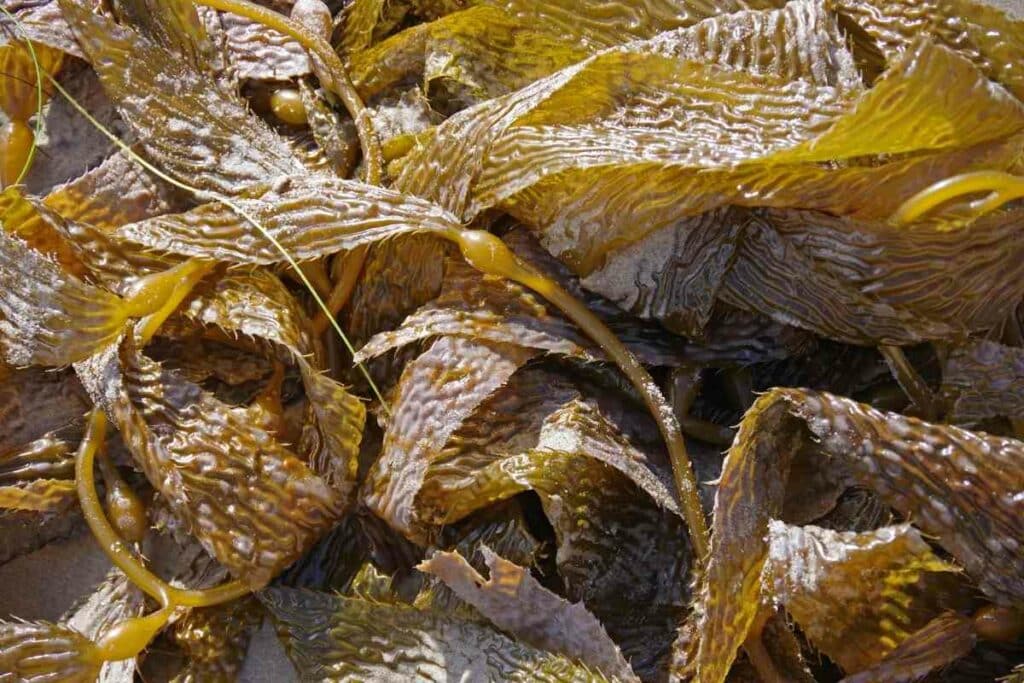
This includes sulfur and boron which are difficult to find.
Given that kelp has been immersed in nutrient-rich sea water in its former life, it is incredibly rich in these nutrients.
Not only that, but kelp’s cell structure also works like a filter, constantly filtering the ocean water and helping the kelp plant to grow at a phenomenal rate.
Some species grow as much as three feet in a single day. In fact, the whole kelp plant synthesizes nutrients so the whole of it is useful as a fertilizer.
Kelp Fertilizer Nutrients
Kelp is completely natural and organic and has more than 70 vitamins and minerals held within it.
Many humans also use it as a dietary supplement; it’s not just our plants and gardens that can benefit!
That said, humans can’t use kelp in fertilizer form and vice versa.
Kelp fertilizer is a great source of both macro- and micro-nutrients including phosphorous, nitrogen and potassium.
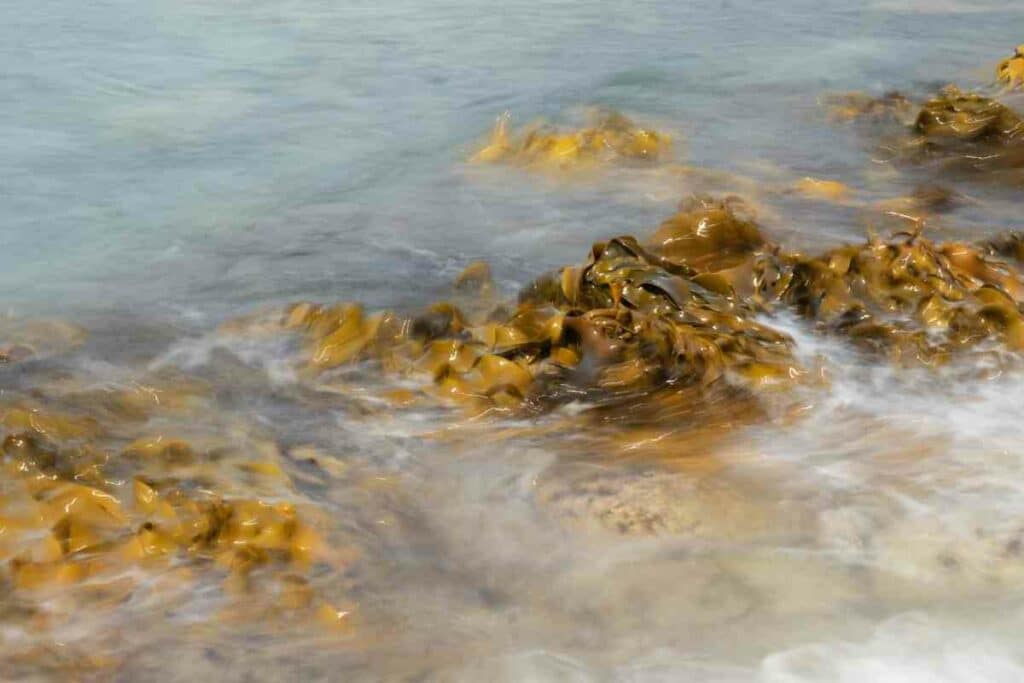
Scientific analysis has shown that kelp includes many key components that help plants to grow strong and healthy:
- Amino acids – These are essential in building strong and healthy cells and form the building blocks of proteins.
- Chelated minerals – These are minerals that have bonded with amino acids that can therefore be absorbed much more easily into plants. Some examples are things like chelated calcium or chelated iron.
- Gibberellins – This is a hormone that helps to regulate processes involved in plant growth such as budding and flowering.
- Auxins – This is a plant hormone that is vital for growth cycle coordination.
- Cytokinin – This is an important growth hormone that helps with the new growth of cells, the enlargement of cells and the development of chloroplasts.
- Traces of minerals – Cobalt, Copper, Boron, Iron, Molybdenum, Manganese and Zinc.
Forms of Kelp Fertilizer
Kelp as a fertilizer is a product that is made from this nutrient-rich kelp and is applied to gardens and crops.
It is often combined with fish products as a fertilizer to encourage the healthy growth of plants as well as promote better vegetable and fruit yields.
It also affects plants’ appearance, making them look lusher and healthier.
Kelp fertilizer comes in three different forms:
- extracts such as kelp powder or kelp meal
- cold-processed kelp (normally in liquid form)
- and enzymatically digested liquid
The latter is used to give a super power boost of nutrients to soils that are deficient in minerals.
The NPK ratio (the nitrate-phosphate-potassium ratio) of kelp meal is actually negligible in kelp meal nutrient readings and this is why kelp meal is often combined with fish meal as this increases the NPK ratio and releases it in around four months.
Kelp powder is kelp meal that’s been ground finely so that it can be put into a solution.
The solution can then be sprayed onto plants or added to irrigation systems making it more readily available for plant uptake. The NPK ratio of kelp powder solution is 1-0-4.
Liquid kelp also contains kelp meal nutrients.
This is a cold-processed liquid that has increased levels of growth hormones, however, its NPK levels are negligible. The liquid form is better at combatting stress in plants, however.
Kelp’s Environmental Benefits
Given its rapid growth, kelp is classed as a renewable source of organic fertilizer.
Its availability makes it a great choice for many home gardeners (as well as the sea creatures that enjoy it!).
Also, as the whole plant is used in making kelp fertilizers, there’s much less wastage, giving it another environmental benefit over other types of fertilizers.
Kelp fertilizer can be added to any type of plant or soil without the worry of by-products of harmful chemicals leaching into unwanted places.
This leads to healthier crops and gardens all round. It is one of the safest fertilizers around and doesn’t contain harmful compounds or additives.
Kelp is also kind to wildlife and doesn’t kill small insects or worms that provide their own nutrients to the soil. Likewise, it is not harmful to microorganisms within the soil itself.
Using Kelp Meal
Kelp works on its own or in combination with other blends of fertilizers such as fish meal.
It’s a great choice for the garden as, unlike with some other fertilizers, you can’t overdo it with kelp.
What’s more, the nutrients in kelp dissolve slower than they do with other types of fertilizer, so it ends up lasting longer.
Kelp can be used in a variety of ways including:
- Dispersing directly
- Hand irrigation
- Applying directly to roots
- Direct spraying
- Irrigation systems on a large scale
- Hydroponic distribution
You should avoid fertilizing before it rains (if your weather is predictable, of course!) as the rain may wash away the fertilizer and reduce its effects.
When using water for distribution, water with a slightly acid pH of 6.0 is ideal as this will help to increase the uptake of the fertilizer by the plants.
Use a non-ionic wetting agent to achieve this as it reduces the surface tension of the water and causes the kelp to spread more.
How much kelp fertilizer to use will depend on the style or size of your garden. Here are some handy hints on how much kelp fertilizer to use.
Vegetable gardens or vegetable beds
You should use between one and two pounds of fertilizer per 100 square feet of garden.
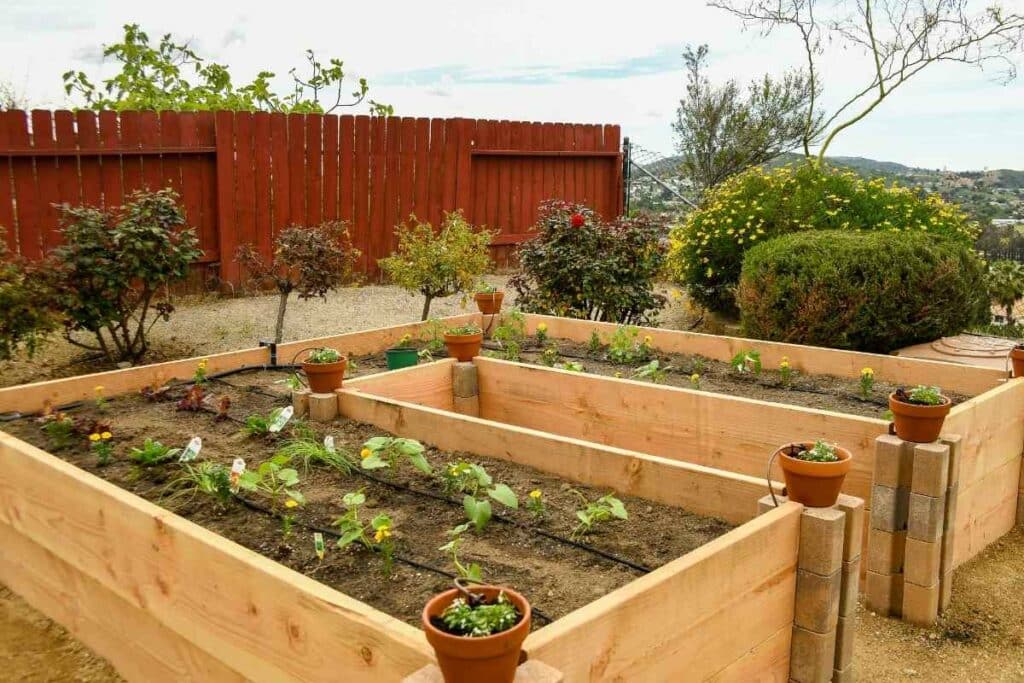
For the best absorption, you should mix it with the top three inches of the soil. It should be applied once or twice in the growing cycle.
Seedlings
When transplanting seedlings from one place to another you can use a teaspoon of kelp meal in every hole, mixing with soil and water.
Growing plants
To feed plants that are growing, you can side dress the plants with one to two teaspoons of kelp meal per plant once or twice during the growing season.
Indoor plants
House plants can also benefit from kelp fertilizer. You can use one tablespoon for every gallon of soil once or maybe twice a year.
How does kelp fertilizer help?
Given the extensive list of nutrients, growth hormones and minerals, kelp fertilizer boosts the speed of growth within your plants and improves their health.
The benefits have been tested and some studies have shown incredible results when kelp has been used on plants.
One study showed that adding kelp treatments weekly to broccoli plants increased their leaf area by around 70% as well as increase the total plant weight (available biomass) by up to 145%!
Studies on corn (maize) demonstrated that seaweed sap caused an increased growth in the cob length and its weight by up to 26% compared with a control crop.
Aside from this measurable growth, generally speaking, kelp will help plants in these more specific ways too:
- Seeds germinate faster
- Cuttings take more quickly
- Rooting of difficult plants improves
- It boots disease resistance
- Flowers increase their vividness when it comes to color
- Fruit flavors are increased
- The number and size of flowers per plant are increased
- Plants can better fight off parasites and insects
- The soil becomes better balanced and nutrient deficiencies are prevented
Kelp Fertilizer and Hydroponics
If you are wondering whether kelp fertilizer can be used with hydroponics, the answer is yes!
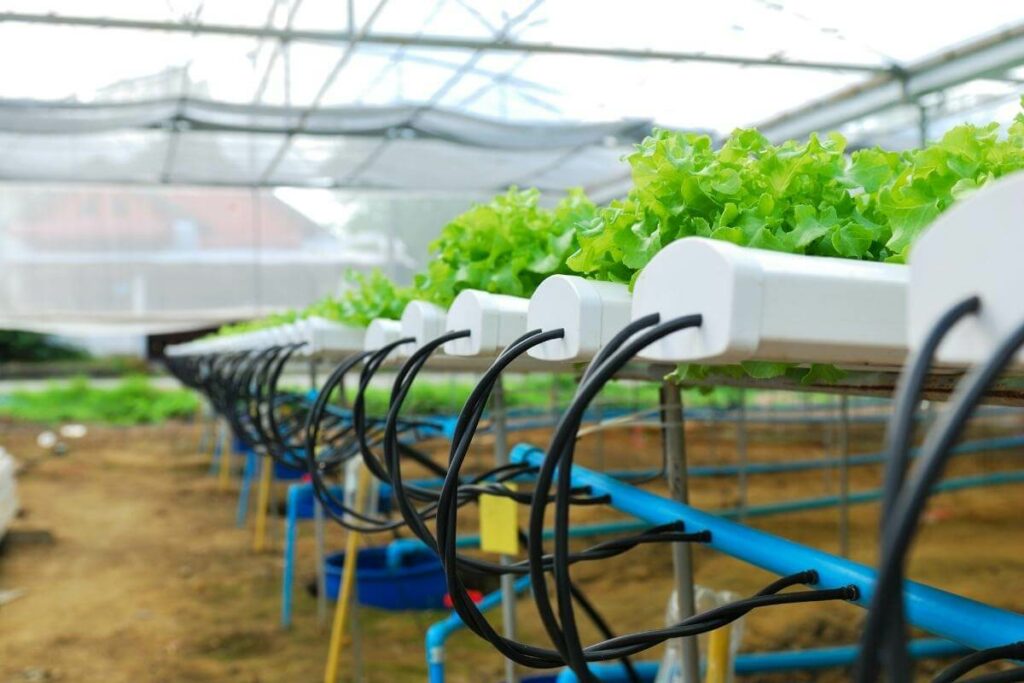
Given that kelp is from the ocean, it’s ideally suited for use in hydroponics.
In a Hydroponic System – Kelp offers the exact same benefits as it does for soil-grown plants. The hydroponic plants will experience improved health, quicker growth, and a better yield.
When using kelp in hydroponics systems, it can be added in the same concentration as you would use in an irrigation system.
So, if using kelp powder, you’d add around half a teaspoon into a gallon of water.
If you want your results improved even more, adding fulvic and humic acid will mean the minerals in the solution are absorbed much more quickly and this will increase growth rates.
Harvesting Kelp
If you’re wondering if you can call at the beach and harvest some of your own kelp, it is possible.
When collecting kelp, you should look for the parts that have washed up toward the center of the beach, further away from the shoreline as it will be a bit drier and will likely contain fewer bugs or contaminants.
You should choose smaller fronds and use it quickly as it degrades rapidly.
It’ll be high in salt content since it’s straight off the beach so make sure you wash it before using it. Too much salt can harm soil and plants.
However, if you are looking to forage, you need to check laws in your area as sometimes taking things from the beach (however fast growing they are) is not permitted.
If you’re not sure, it’s best to buy kelp fertilizer from your garden store.
Final Thoughts
Who knew that kelp was so fascinating and so versatile?
This little sea-grown non-plant certainly packs a punch when it comes to fertilizing your garden or indoor plants.
What’s more, it’s suitable for any plant and you can’t really use too much! And, thanks to its fast-growing replenishment, it’s a sustainable source of fertilizer too.
